How to choose a large table?
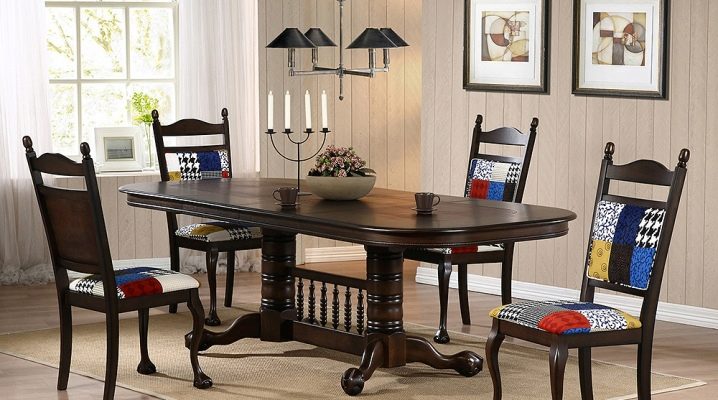
It is sometimes necessary to use large tables for two reasons - either you need to seat a lot of people at them, or a small modest table in the vast space of the room is visually "lost". But in both cases, you should choose this piece of furniture carefully, because it will still be used for many years.
Peculiarities
When the goal is only from time to time to seat guests (visitors), and there is not too much space, it is worth using an expanding or folding structure. Successful examples that show themselves well in a variety of conditions are transformers and "books". A large table made of wood or glass is environmentally friendly; with proper execution and decoration, it becomes a real decoration of the entire interior. You can enhance the attractiveness by choosing a model with decorative forging and mosaics, as well as with carved parts.



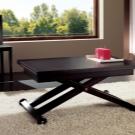

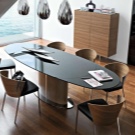
Design and color
A large table is able to demonstrate its aesthetics only in a spacious room, and its appearance, appropriateness, is determined primarily by its form. Geometric configuration should not be underestimated. For the living room, it is advisable to choose oval tables. They look much better than classic rectangles. The absence of sharp corners is emotionally more favorable, it sets you up for warm and comfortable communication, and it is safer to use such a table. In kitchens, it is recommended to use round options, especially if there are small children in the house. The undoubted advantage of such solutions is their suitability in any style.
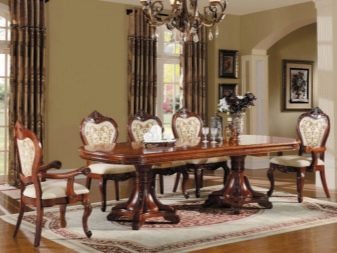

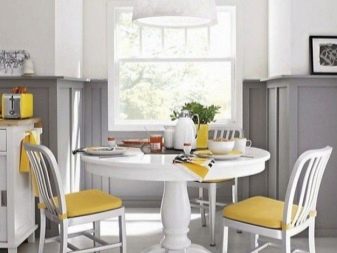

In home offices, it is most correct to put large corner tables; a smaller part of the tabletop is reserved for a PC or laptop, and the main one serves as a workplace. You need to take care of fitting the table into the general environment. So, the dining group is most often made corresponding to the style and basic material of other furniture. But the color can be either coincident or sharply contradictory, if it is decided to turn the table into an accent piece of the interior.

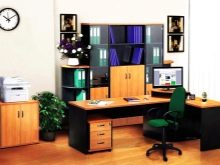

Classic, Provencal and Victorian styles are best combined with natural wood, decorated with carved inclusions. The high-tech interior usually implies a glass structure with chrome-plated steel legs. In the Provencal interior, the use of wood is most justified, decorated as if faded under the winds blowing from the sea and the bright sun. The preferred colors are ocher, olive and cream, less often other pastel tones are used. A pure white color is also acceptable, but it is not very practical, such furniture will quickly get dirty.
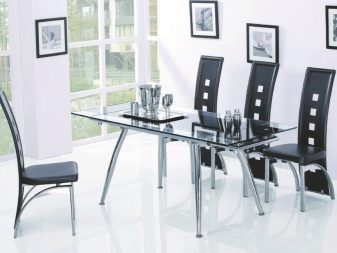
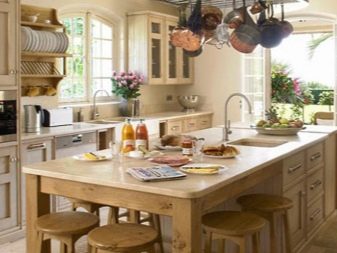
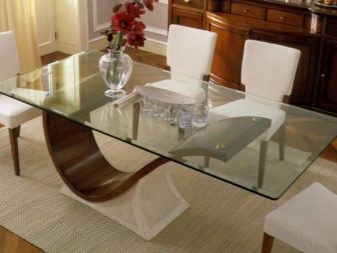
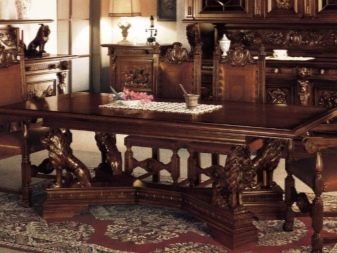
Beige and other light colors are good if you want to maximize the space. Black color will help to get rid of the feeling of excessive size of the room (hall). A characteristic feature of the Scandinavian style will be the use of well-processed wood, which gives the impression of maximum quality and external invincibility.
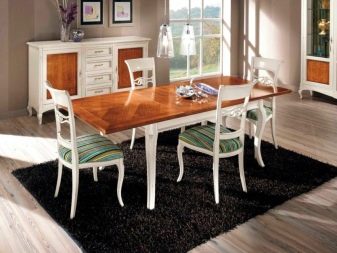
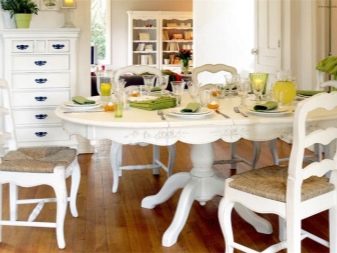
Selection recommendations
For the dining area, which is used constantly, there are no restrictions in style or size. Apart from considerations of practicality and your personal taste, of course. When it is known in advance that most of the time the room will be empty or used differently, it makes sense to prefer a transforming table. Be sure to match the appearance of the structure with the surrounding interior.
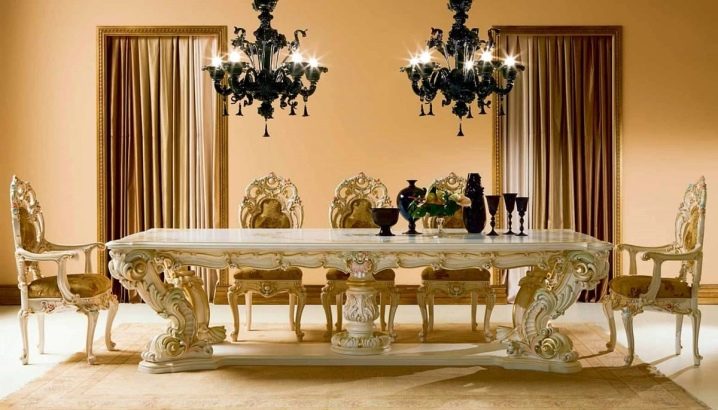
Rectangular tables look good in rectangular rooms, but do not forget to carefully calculate the required space. Otherwise, it may turn out that there is too little space between the countertop and the wall or other furniture for a convenient passage. A narrow elongated living room will be better furnished if the table stands across the entire room by the window itself - this will help correct the unwanted shape of the room and at the same time not interfere with the passage.
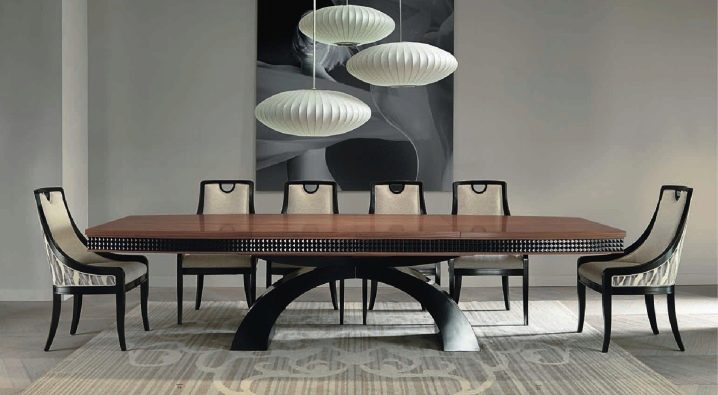
Beautiful wooden tables are appropriate when decorating a room in the country spirit; to emphasize the stylistic affiliation will help the use of curly carving along the edge of the table top and metal legs. In a modernist kitchen, a glass tabletop, decorated with additional elements, standing on weighty legs made of natural wood, is acceptable. For kitchens, laminated surfaces are better than veneered surfaces, as they will not bubble from the slightest ingress of water. If you have already firmly decided that you will use a tablecloth, you do not need to think too much about the shape of the legs and the color of the structure, anyway they will not be visible to anyone.

Tables and chairs should not be completely identical to each other in appearance, this will create the feeling of a faded and expressionless space. Stylistic coincidence - yes, but not complete identity.
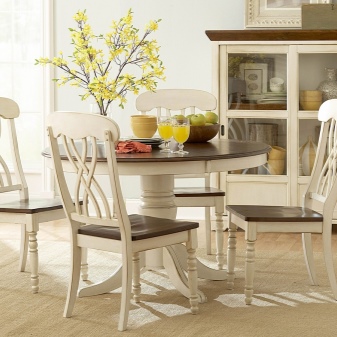
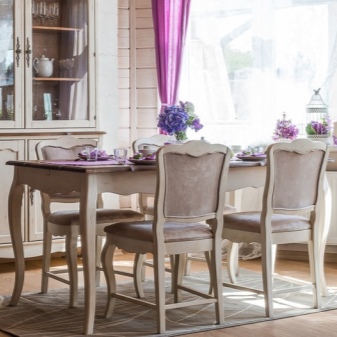
Materials and their properties
It is important to evaluate not only the aesthetic, but also the practical side of the purchased table. The slightest inconvenience can be a very serious disadvantage.
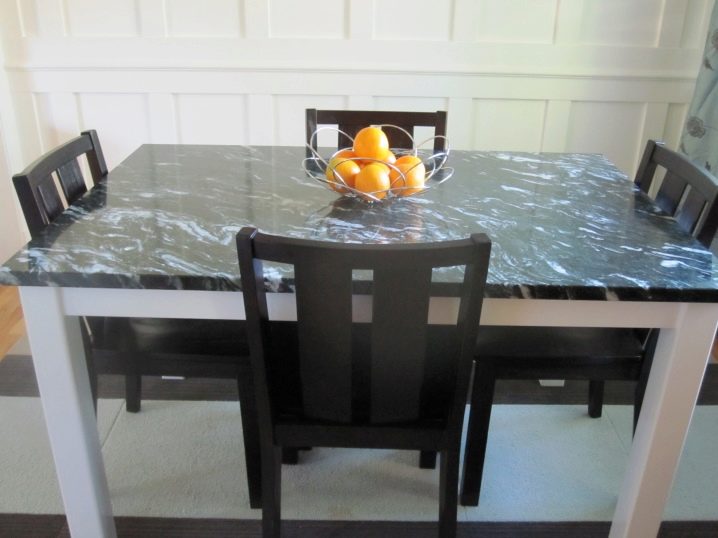
One-piece artificial stone is very popular lately, which is explained by its undoubted advantages:
-
Environmental friendliness;
-
Possibility of long-term use;
-
Low susceptibility to bacterial and fungal infection;
-
Ease of care;
-
Good quality and external exclusivity.
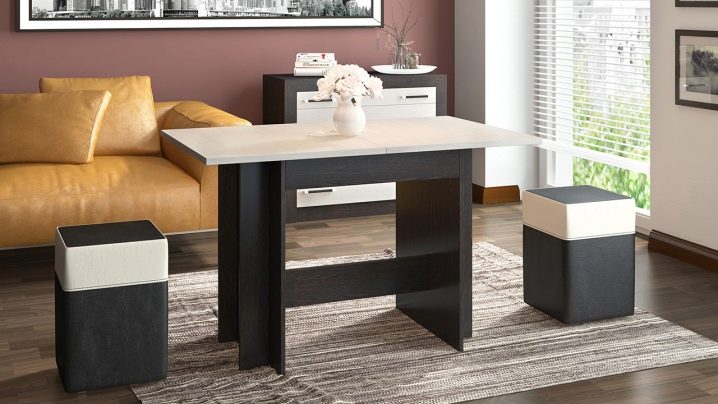
An inexpensive and practical solution are tables based on chipboard. In addition to their low price, they are attractive for their color variety: you can always choose either white or any other color of your choice. More perfect material, however, all experts recognize MDF, it even looks more solid.
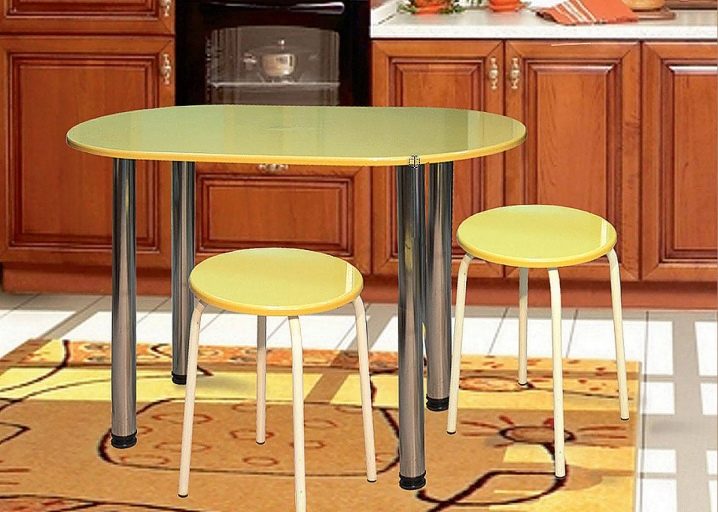
Tables decorated with natural leather are considered original, besides these designs provide simplicity and ease of care. For the manufacture of the surface, laminated chipboard is used, glass parts are placed on top of it. This solution is equally appropriate in classic and ultra-modern environments. Often, instead of natural leather, its eco-analogue is used.
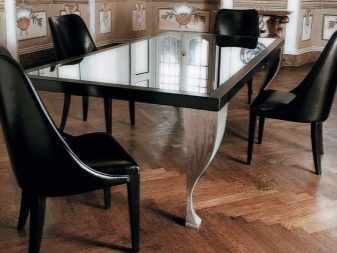

Tables decorated with tiles go well with most interiors. They are durable and in harmony with tiled kitchen aprons. The ease of cleaning is also important.













The comment was sent successfully.